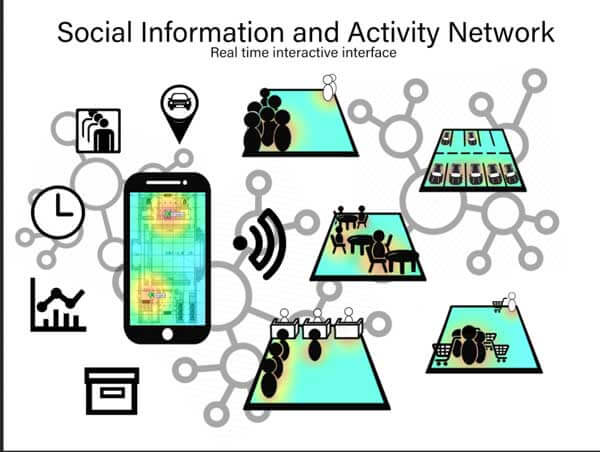A life enriched by the fusion of the real and the virtual
KMD × Be-i × Keio-NUS CUTE Center
“Infrastructure for Collaboration and Experience Sharing (ICES)”
Every day we create posts and share details of our personal lives on internet-enabled (network) terminals such as smartphones. While these networks are a current means of sharing information, in the forthcoming generation there is a high likelihood that environments will come into being to allow us to share things other than information. This may include sharing actual experiences or the feeling of being in a particular space. This prompts one to consider what will become of the relationship between the outside world (the real) and this networked world (the virtual) when this comes to pass. Infrastructure for Collaboration and Experience Sharing (ICES) is a project promoted by Kazunori Sugiura, at the time an associate professor at KMD, in association with, among others, the software development company Be-i Co., Ltd. To examine this relationship while both creating mechanisms that integrate the real and the virtual and ensuring their social implementation.
Be-i are charged with the task of developing software to expand activities from the real world, such as employment interviews and certification exams, into the virtual realm. “As it stands, we are engaged with recreating the sensation of
being in a particular place by means of interfaces involving, for example, CG and photographs. As part of ICES, we are endeavoring to make it possible to give expression to actual environments in the real world in real time by integrating sensor technologies with this visual base.” (Mr. Isobe)
The testing field for the social implementation of this mechanism is the Keio research hub Keio-NUS CUTE Center located in Singapore. We are now engaged with creating a system to allow users to confirm the state of congestion of the food courts where many tens of thousands of students of the National University of Singapore gather and the sales status of currently popular menu items at these locations on their smartphones.
Sensors can be used to get a handle on both the precise movements of each individual and the larger flows of people. By then linking information generated by human activities in a particular location such as “words searched” or “what has been tweeted on twitter,” we are aiming for a support environment whereby we can clearly appreciate the atmosphere, or the bustle and excitement, of a particular space. “For example, might it not be fun if we made the user interface resemble Dragon Quest? I would like to consider how this information should be best expressed going forward,” says Associate Professor Sugiura.
This endeavor has the potential to play a major role in a country such as Japan, where diverse events and showcases are held throughout the country. “This might be deployed in various ways regardless of scale by, for example, connecting the flows of people and capital for new regional revitalization endeavors using virtual currencies,” says Mr. Isobe.This is how we are envisaging a future in which the real and virtual are seamlessly integrated and newly enriched lifestyles thus come into being.

Be-i Co. Ltd.
Chairman and CEO Yukihiro Isobe

(This article was written in March 2019.)